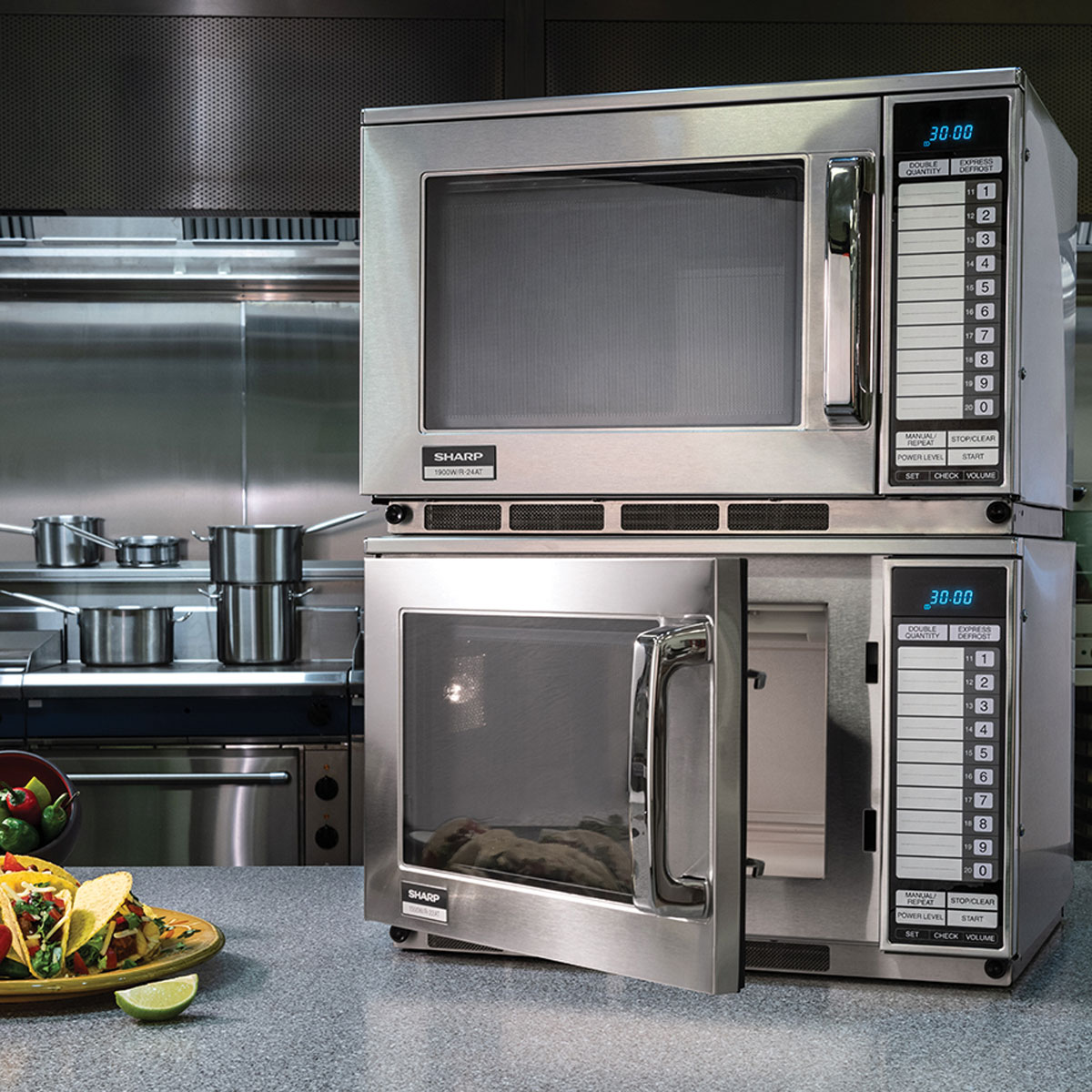
Finely-tuned microwave technology offers chefs greater cooking control
IN RECENT conversation with a head chef friend of mine, a plain-speaking Fifer specialising in game cookery, I asked his opinion of microwave use in commercial kitchens, and he curtly replied that if he caught any of his junior chefs microwaving any form of protein, they’d get dragged into his premises’ walk-in fridge and treated to some loud, harsh words.
Because chefs, as a species, have been cooking with fire for thousands of years, the switch to cooking with invisible electromagnetic waves has been, and continues to be, an uncomfortable one.
This fire-free heating technology was only first patented in the 1950s, growing out of the development of radar during WW2, and it was the late 1970s before microwave ovens became affordable for domestic use, spreading into commercial kitchens in the 1980s, since which time chefs like my friend have been doing their level best to put nothing more demanding into them than a sticky toffee pudding.
To be fair, the earliest microwaves, like the earliest alcohol-free beers, suffered from some limitations and the popular perception of each hasn’t shifted very much ever since.
But evolution does not stand still, and neither has microwave technology – recent years have seen the launch of commercial models offering a previously unattainable level of finesse, both in terms of varying the intensity of the energy directed at the food to be cooked, and in targeting where that energy goes within the cooking compartment.
No one these days would argue against the speed and outstanding energy economy of commercial microwaves – so the task now facing the companies that manufacture and sell the latest fine-tuned machines is one of education – convincing chefs to step away from the fire long enough to see the future.
“Many foods and dishes can be cooked very very well in a microwave oven”
In particular, Duncan Vipas, head of sales at R H Hall, lauded the recently introduced inverter microwave systems which deliver constant rather than pulsed power, offering both energy savings and consistent results.
“The true versatility of a microwave can often be overlooked,” declared Vipas. “Many foods and dishes can be cooked very, very well in a microwave oven: sauces, meat, fish, vegetables, fruit, pasta, rice and eggs can all be cooked with great results.
“With inverter technology now available on some models, operators can consider foods that might not normally suit microwave cooking. A traditional microwave set at 50% will pulse by switching power on and off throughout the cooking period, which can lead to uneven results in some foods. Inverter technology will provide a precise and constant supply of power at 50%, making it easier to cook or reheat foods slowly and defrost dishes to perfection,” he explained.
“Thanks to precise temperature control, you can cook, reheat or defrost a far greater variety of dishes that conventional microwaves were previously not able to prepare to the same high standard. By providing the operator with precision control, it is perfect for defrosting or heating delicate foods, as well as providing ultra-fast regeneration times with a high power 1800W output.”
Scott Kedwards, development chef at Panasonic, said that inverter microwave technology allows the option of a lower wattage continuous cook over the whole cook cycle – right down to 25% of the maximum wattage if needed, or even lower when defrosting products – putting far less stress on delicate ingredients.
The problem was that, despite the advent of commercial machines fitted with these variable power controls, the majority of users rarely shift away from full power, even when that is not the best option for their dish.
“Some chefs will say that by using a microwave ‘it just kills your food’, but we would argue that is only going to happen if you don’t understand how to make the most of the machine,” said Kedwards, who is engaged in a constant round of trade shows and on-site demonstrations to spread the message that culinary subtlety and microwaves need not be strangers.
“Of course microwaving is not for every single product. But there is a time and place where it can be much more beneficial than is currently appreciated by some chefs. When we do get an attentive audience for a demonstration, they are always pleasantly surprised with the results and range of products that can be achieved.
“Our challenge is to change the mindset of chefs just bunging stuff in the microwave and putting it on full power.”
Vipas highlighted the latest digital control tech that can take that power-setting decision away from busy staff, and help deliver menu consistency over multiple sites.
“Some microwaves available today are linked to bespoke software, allowing development chefs to test and create specific menu programs, then upload them directly to machines using USB or SD card,” he said. “This ensures consistency in results as well as the ease of having various menus available at short notice. Look for machines that have easy to use software and a large number of menu programs – some have up to 297 programs available.”

Another recent technical leap has been the ability to target different areas within the microwave cooking chamber to receive more or less energy, as required. In Kedwards’ development work, proper use of this variable had enabled dishes with a variety of very different components to be prepared simultaneously, with reportedly excellent results.
“Not many people are utilising this function yet, but it really opens up what you can do within that cooking compartment. Being able to choose to generate power from either the top or bottom of the cavity only allows for targeted heating with certain products.”
“I can do a tray of perfectly steamed salmon fillets in three-and-a-half minutes.”
Similarly, there are also solutions for larger machines that suit hotels, schools and CPUs with internal shelving allowing for two full gastronorm trays to be placed inside. With the use of high heat microwave containers and trivet inserts, chefs can use the machine as a very efficient on demand steamer with no need for water and waste to be connected.
“I can do a tray of perfectly steamed salmon fillets in three-and-a-half minutes. When I’ve demo-ed that, people say ‘wow’, because it’s delivering something that isn’t rubbery or overcooked – it’s translucent and pink throughout,” said Kedwards.
“We get great results with steaming that way, as it’s the superheated water acting as the heat vector, rather than the microwaves. The machine agitates the water much more aggressively than the product itself.
“For banqueting or weddings, that ability to cook perfect fish and vegetables at scale on demand and importantly in a variety of locations not just in a kitchen! You can absolutely do that now, and rely on getting good results.”
With all these forward-looking improvements, the attitude that microwaves can be treated as ‘throwaway appliances’ is in need of revision, not least because sustainability is so high on the industry agenda.
So it is more important than ever to choose equipment with a proven track record for reliability, designed to last many years – and to suit the business that it is being bought for.
Vipas advised operators to look at their menu and be clear on what tasks the microwave they are buying is going to undertake: “It is very important to choose the correct wattage. You need to select an oven with sufficient power, but just as importantly, do not over specify.”
As ever, he also strongly advised operators to buy commercial microwaves, and not be tempted by cheaper domestic machines, which simply aren’t built for the rigours of a professional kitchen.



















